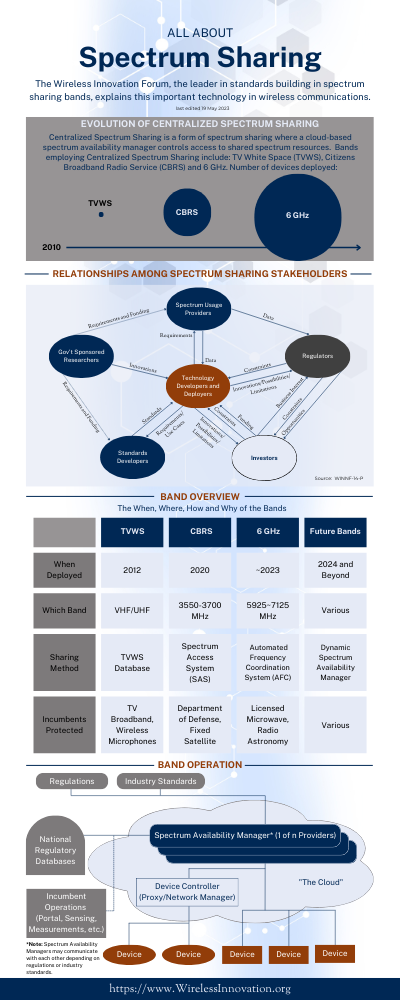- Home
- Knowledge Center
- Reports, Recommendations and Specifications
- Information Documents
- All About Spectrum Sharing Infographic
- Free Webinars
- Tech Talks
- Setting the Standard Video Blog
- Beyond the Radio Dial Video Blog
- Conference Proceedings
- Workshop Proceedings
- Springer Journals
- Market Studies
- What is the SCA?
- Issue Submissions
- Reference Implementations
- What is SDR?
- What are CR and DSA?
- About Us
- Events
- News
- Projects & Committees
- Members
- Join the Forum
Wireless Innovation Forum Top Ten Most Wanted InnovationsInnovation #4: Artificial Intelligence/Machine Learning for Radios4.1 Executive SummaryWith the advent of artificial intelligence and machine learning technologies being broadly applied to many aspects of life, it’s only natural for the technology to be applied to radios, as well. There are a number of potential use cases, commercial, civilian and military, some of which are already under investigation. Examples include:
In order for these scenarios to come to fruition, there are a number of enabling technologies and ecosystems that need to be incubated, nurtured and developed. There is more work needed to be done with regards to both software and hardware. On the software side, one of the greatest challenges is to implement the learning databases, with on-going updates, and then algorithms to make the best decisions using the learning databases. The development of the actual Artificial Intelligence/Machine Learning (AI/ML) algorithms and datasets themselves, form the core of the cognition ability of the radio. On the hardware side, power efficiency, cost per unit, ease for programming and memory requirements all come into play and must be weighted to find the most optimal solution. Different types of processors can be viable choices depending on the specific use cases. 4.2 ApplicationDeveloping and deploying autonomous radios capable of AI/ML will benefit a variety of use cases for commercial, civilian and military purposes.
4.3 DescriptionAI/ML for radios will be enabled by both hardware and software innovations. For hardware, there is a need for embedded platforms which can support multiple AI/ML use cases and requirements. In terms of processors, the primary choices today for AI/ML processing are Application Specific Integrated Chips (ASIC), (Graphics processing Unit) GPU and Field Programmable Gate Arrays (FPGA). In general, ASIC is the lowest in power efficiency and cost per unit, GPUs are high performance but consume a lot of power, and FPGAs are harder to program but consume less power than GPUs. In addition, memory requirements tend to be high for AI/ML systems in order to store the datasets for training, as well as cognition. And there are also multiple potential form factors desired by different end users, including small standalone devices to rack-mounted units more rugged form factors like VPX. Since there is no single architecture that can support all the disparate requirements of each potential use case, there is a clear opportunity for multiple vendors to compete in AI/ML COTS hardware platforms. With regards to software, one of the greatest challenges is to implement the learning databases, with on-going updates, and then algorithms to make the best decisions using the learning databases. The development of the actual AI/ML algorithms and datasets themselves, form the core of the cognition ability of the radio. Other software key needs include development related to programming tools and methodologies, libraries and frameworks. Examples include:
There are plenty of opportunities in the ecosystem for any of these types of innovations that make it easier to develop and deploy radios capable of AI/ML. As the enabling technologies develop and the ecosystem matures, we will see the advent of fully autonomous radios that support a variety of use cases for commercial, civilian and military purposes. |



